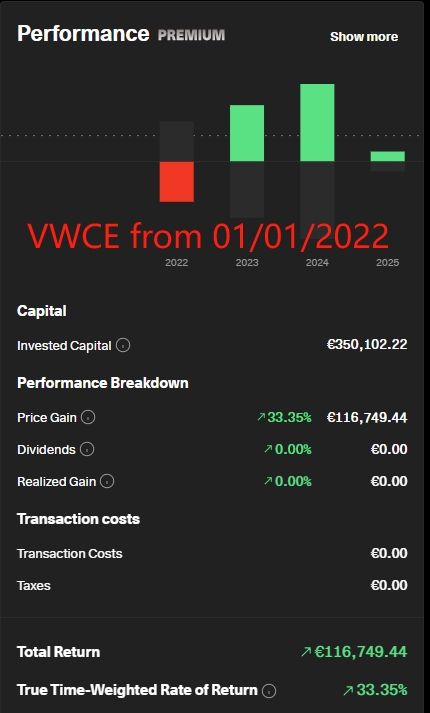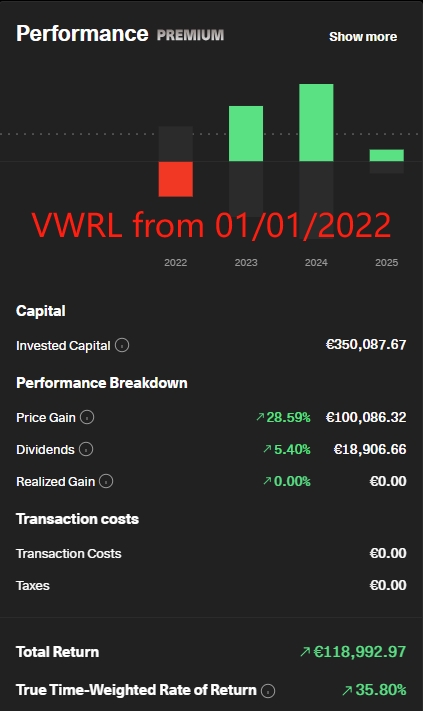Everybody is telling me that ACC always wins over DIS on the total return, but I have created 2 test portfolios here in Getquin with the following parameters:
Capital: 350.000 euro
Investing date: 01/01/2022
one portfolio containing only $VWCE (+0,51%) and the other only $VWRL (+0,47%)
To keep it simple:
- I didn't reinvest any dividend = Disadvantage for VWRL
- I didn't calculate any dividend tax = Advantage for VWRL (still not everybody has to pay dividend tax)
The screenshot clearly shows a win for the VWRL-distributing version.
How do you explain that?






